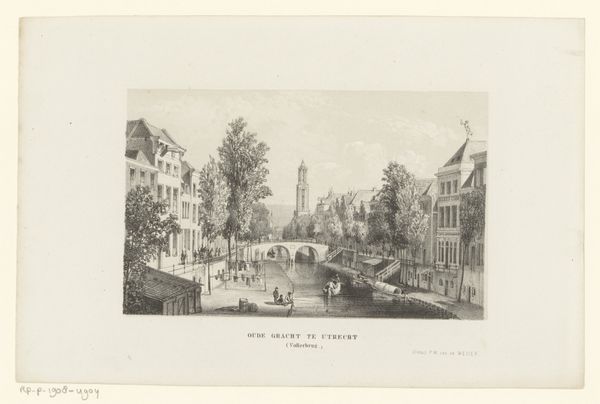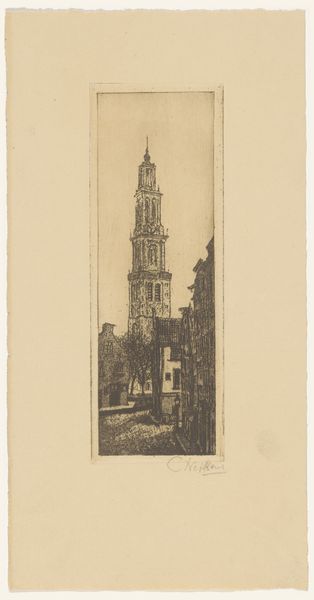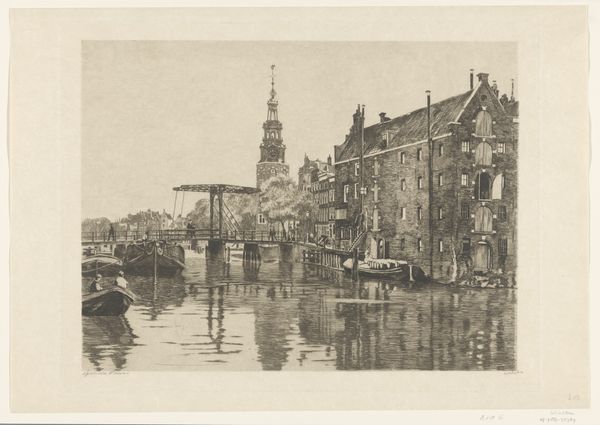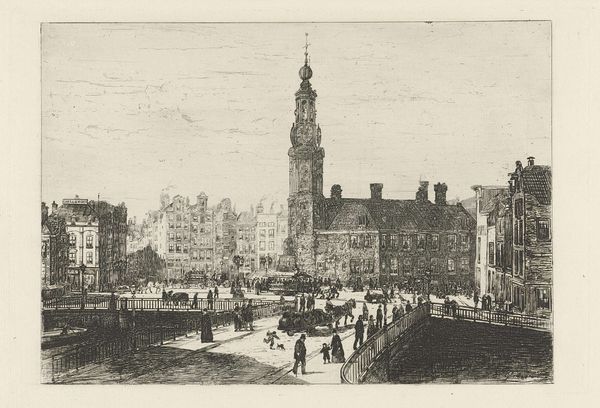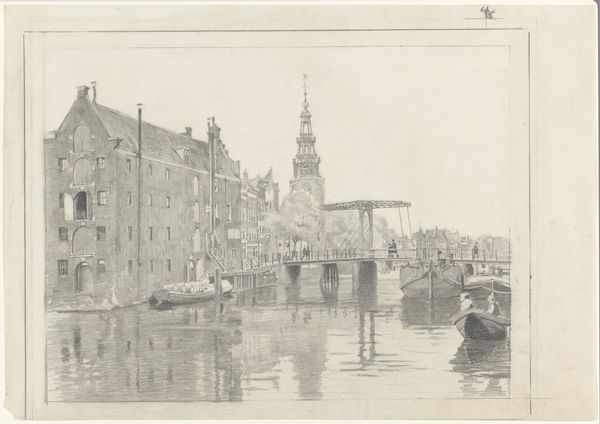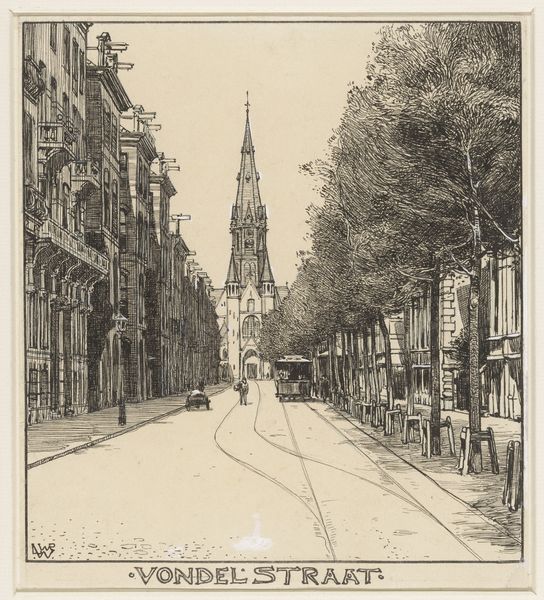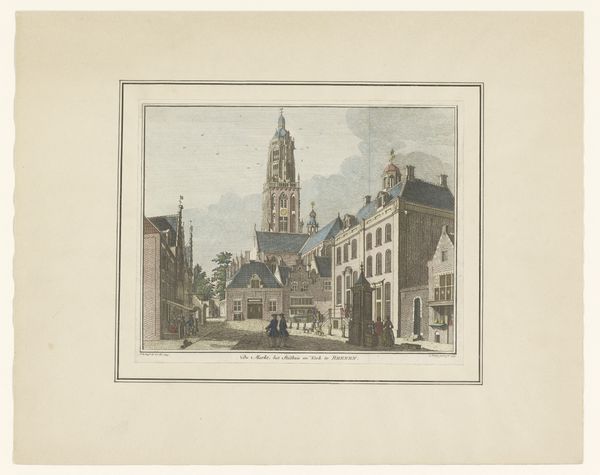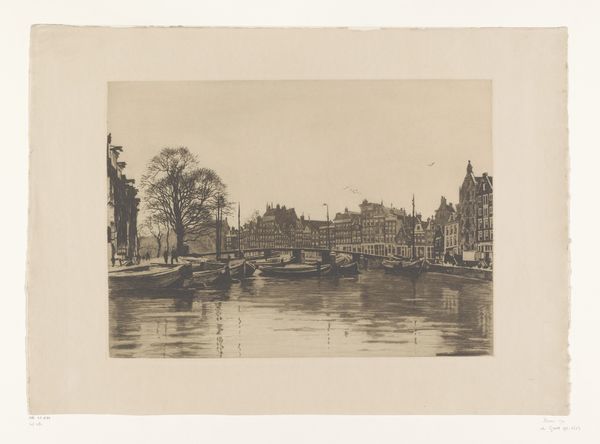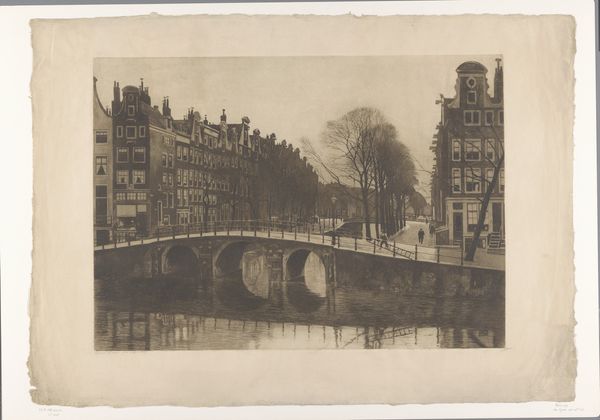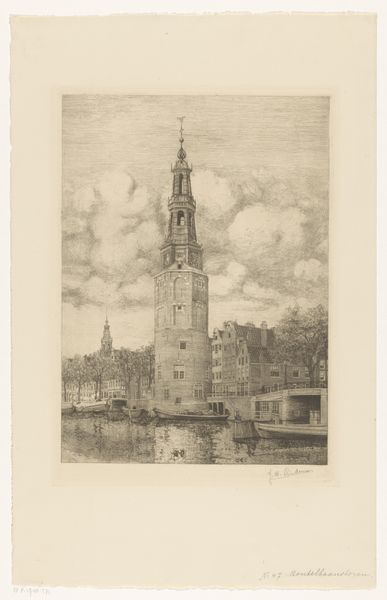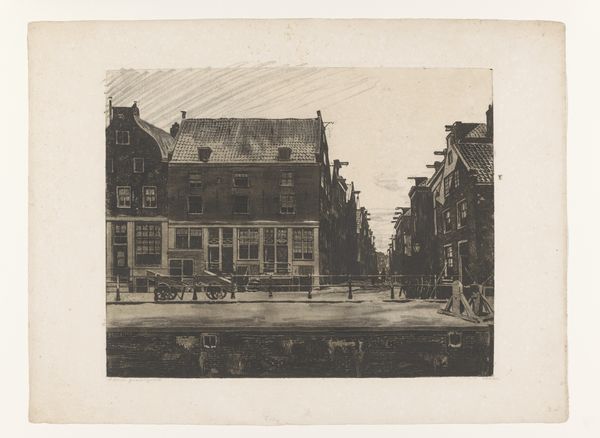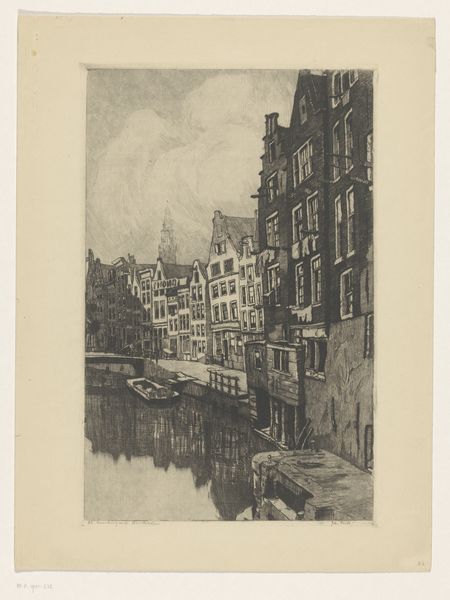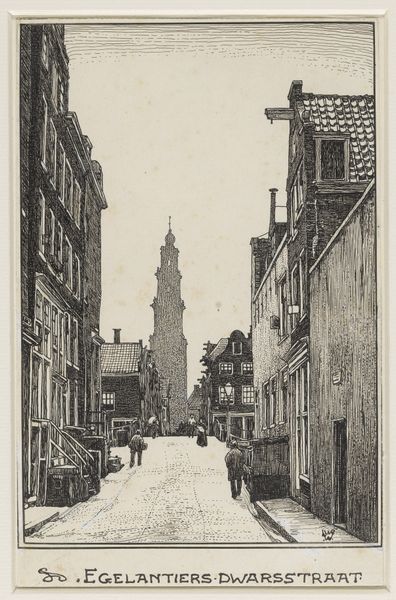
print, etching
# print
#
etching
#
landscape
#
cityscape
Dimensions: height 157 mm, width 238 mm
Copyright: Rijks Museum: Open Domain
Editor: This etching, titled "Gezicht op de Westertoren, te Amsterdam" by Henri Wouters, likely created between 1876 and 1907, captures a cityscape view. I’m immediately struck by the somber mood. It makes me wonder, what stories do you think this scene tells about Amsterdam at the turn of the century? Curator: The image’s somber mood and detailed etching technique do offer a compelling glimpse into the socio-political realities of Amsterdam at that time. Etchings, as a medium, democratized art, making cityscapes like this accessible to a wider audience. How might this accessibility challenge or reinforce existing power structures and class dynamics? Editor: I see what you mean. So, the very act of depicting Amsterdam and making it available could have a social impact? Curator: Precisely. We can think about who is represented in the artwork – or, perhaps more importantly, who is not. Does it accurately portray the lives of all Amsterdammers, or does it center certain narratives, obscuring the experiences of marginalized groups? Consider how class and gender intersect in defining whose stories are told and whose are left out. Does the artist’s position impact our understanding? Editor: That's a really important question to keep in mind. The piece focuses on this central tower – maybe representing religion or the government. Curator: Absolutely, and it might invite questions of social justice. This is a period of growing labour movements, and debates over equality. Does the grandeur of the Westertoren, then, function as a symbol of unity or as a reminder of societal hierarchies and power imbalances? How would an Anarchist living at this time, looking at this image, interpret this work? Editor: I hadn’t considered that perspective. So, understanding the social movements of the time is really important for interpreting the art. Curator: Exactly. Thinking intersectionally – race, class, gender – is vital to fully appreciating the artwork's cultural and historical context. Editor: I’m going to remember that in my next essay!
Comments
No comments
Be the first to comment and join the conversation on the ultimate creative platform.
